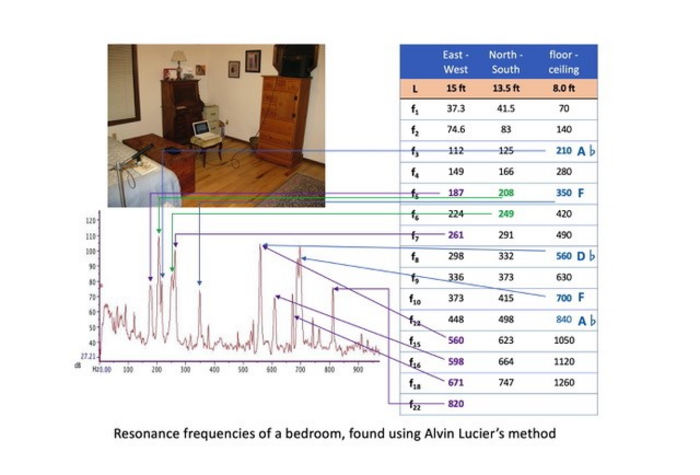NASHVILLE, Tenn., Dec. 7, 2022 – “I am sitting in a room, different from the one you are in now.” With these words, Alvin Lucier begins a fascinating recording where his voice warps and becomes indistinguishable over time — solely because of how sound reflects in the room. For physics students, this audio can be used to reveal details of the surrounding room and teach important lessons about acoustic resonance.

Credit: Andy Piacsek
NASHVILLE, Tenn., Dec. 7, 2022 – “I am sitting in a room, different from the one you are in now.” With these words, Alvin Lucier begins a fascinating recording where his voice warps and becomes indistinguishable over time — solely because of how sound reflects in the room. For physics students, this audio can be used to reveal details of the surrounding room and teach important lessons about acoustic resonance.
Andy Piacsek, of Central Washington University, will discuss how he employs Lucier’s project in the classroom during his talk, “Students are sitting in a room.” The presentation will take place Dec. 7 at 12:10 p.m. Eastern U.S. in the Lionel room, as part of the 183rd Meeting of the Acoustical Society of America running Dec. 5-9 at the Grand Hyatt Nashville Hotel.
To create this interesting audio, Lucier recorded 70 seconds of speech in a room, played it back over a speaker, and repeatedly rerecorded the result. Eventually, the feedback overwhelms the original recording, and the words are replaced by a collection of distorted frequencies.
In the first iteration of Lucier’s recording, his speech contains the typical range of sound frequencies that make up a human voice. When sounds at most frequencies bounce off the walls in the room, they get jumbled together and eventually fade out. But some frequencies ‘fit’ perfectly in the distances between opposite walls, and these frequencies resonate and grow louder with each recorded iteration.
“Each pair of walls has a set of natural frequencies,” said Piacsek. “By analyzing the frequencies that make up the recording, especially in the later stages, students can determine which frequencies are resonances of the room. The tricky part is figuring out which frequencies go with which pair of walls. This is a bit of a puzzle … and puzzles are fun!”
After identifying the resonant frequencies, students can apply their knowledge of physics to calculate the distance between pairs of walls, and therefore the size of the room Lucier used for his recording. More advanced students can try to make a version of the recording in their own rooms and see if their calculations match their measured room dimensions.
“At the introductory level, especially, many students come to a science class with the notion that science is dry and abstract, not something they identify with,” said Piacsek. “When they see how their classroom learning applies to scenarios they can relate to, it becomes less abstract and they remember it better.”
###
———————– MORE MEETING INFORMATION ———————–
Main meeting website: https://acousticalsociety.org/asa-meetings/
Technical program: https://eppro02.ativ.me/web/planner.php?id=ASAFALL22&proof=true
ASA PRESS ROOM
In the coming weeks, ASA’s Press Room will be updated with newsworthy stories and the press conference schedule at https://acoustics.org/asa-press-room/.
LAY LANGUAGE PAPERS
ASA will also share dozens of lay language papers about topics covered at the conference. Lay language papers are 300 to 500 word summaries of presentations written by scientists for a general audience. They will be accompanied by photos, audio, and video. Learn more at https://acoustics.org/lay-language-papers/.
PRESS REGISTRATION
ASA will grant free registration to credentialed and professional freelance journalists. If you are a reporter and would like to attend the meeting or virtual press conferences, contact AIP Media Services at [email protected]. For urgent requests, AIP staff can also help with setting up interviews and obtaining images, sound clips, or background information.
ABOUT THE ACOUSTICAL SOCIETY OF AMERICA
The Acoustical Society of America (ASA) is the premier international scientific society in acoustics devoted to the science and technology of sound. Its 7,000 members worldwide represent a broad spectrum of the study of acoustics. ASA publications include The Journal of the Acoustical Society of America (the world’s leading journal on acoustics), JASA Express Letters, Proceedings of Meetings on Acoustics, Acoustics Today magazine, books, and standards on acoustics. The society also holds two major scientific meetings each year. See https://acousticalsociety.org/.
###




